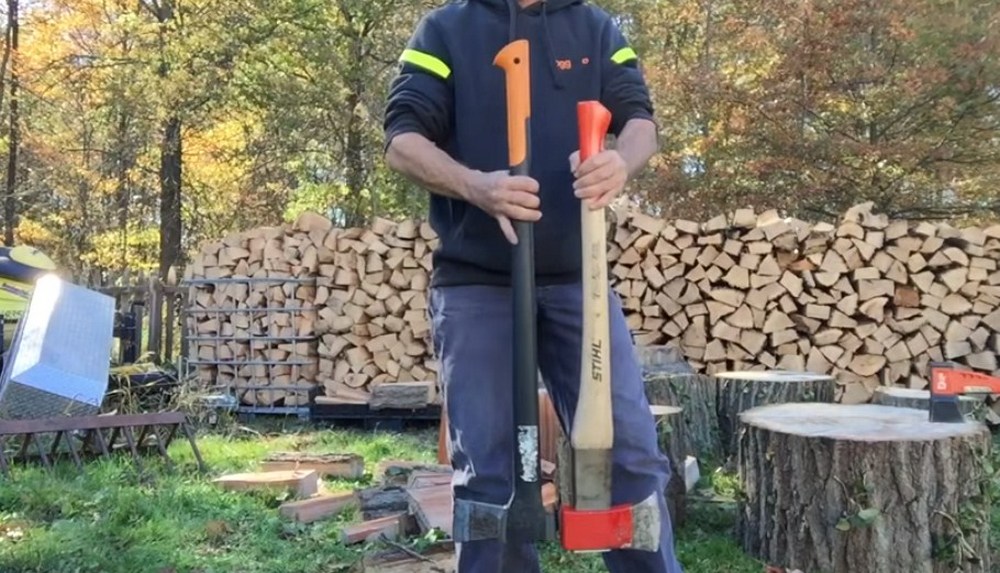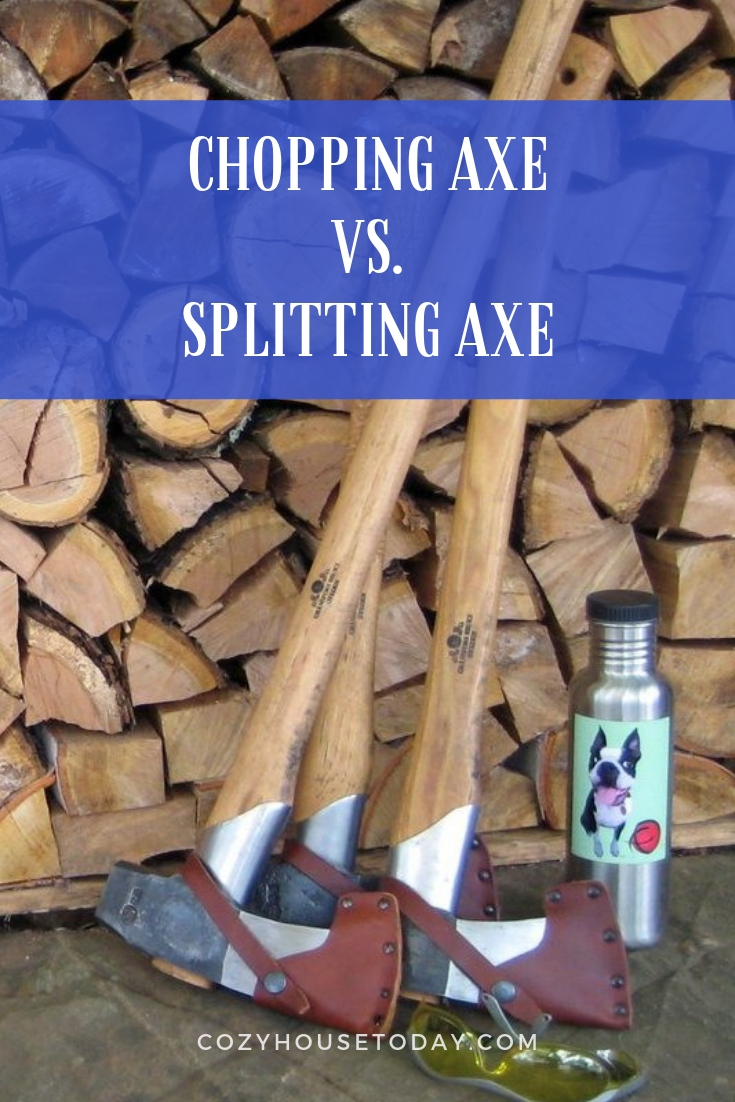 Long gone are the days where we had to chop wood by hand.
Long gone are the days where we had to chop wood by hand.
Due to the evolution of wood cutting technology, it is now possible to cut, chop and split wood with little to no effort.
Woodcutters can achieve this through the use of either a splitting axe or a splitting maul. But how do you know which one is the right one to use?
Continue reading to learn the differences between a splitting axe and a splitting maul.
What is a splitting axe?
A splitting axe is a tool with a narrow metal head that cuts wood in half. Swinging an axe downwards splits the wood along the grains and breaks apart the fibers, unlike traditional axes, which go across.
However, there are a few slight drawbacks to using axes. First, you need to have good accuracy with each swing of the axe.
The reason for this is that the handles are relatively short and requires you to be up close and personal. Second, axes are prone to get stuck in the wood you’re trying chop or split, so try not to be too forceful.
What is a splitting maul?
Like an axe, a splitting maul is a tool with a wedged metal head that weighs slightly more than the head of a splitting axe. Due to the width of the head, a splitting maul is a lot more efficient at cutting wood than an axe.
How do they differ?
Even though both a splitting axe and a splitting maul share the same purpose, there are a few differences between the two. Here are three distinct differences between splitting axes and splitting mauls.
Weight
As I mentioned before, a splitting maul is slightly heavier than a splitting axe. A splitting axe can weigh between three to six pounds, while a splitting maul can weigh between six to eight pounds.

Splitting axes are often seen as a multi-purpose tool and its lightweight allows the handler to use it longer without fatigue.
However, it can reduce the efficiency of the axe. The splitting maul may be a bit heavier, but it makes it a lot more effective when it comes to splitting wood.
Head Design
A splitting axe features a tapered head with a very sharp blade. Because of this, it can not only split wood, it can also cut it as well. This is what makes the axe a multi-purpose tool.
Mauls have bigger and blunter heads. These heads have a wider wedge, which makes it very efficient. However, due to the sheer size and increased weight, it’s going to take pure muscle and effort to properly split wood.

Handle Material
Another distinct difference between an axe and a maul are the handles. Compared to axes, mauls have a longer handle to help the tool find its way to the ground and not back towards your feet.
This, in turn, completely eliminates the risk of injury brought on by accidents.
However, unlike mauls, axes are prone to breaking simply because most of the handles are made of wood themselves. On the other hand, some maul handles are made of metal, so it’s less inclined to break when splitting wood.

Which tool is better for splitting wood?
Even though people have used axes to split wood for centuries, most people recommend that you use a maul instead. This is because mauls are blunt and not sharp, unlike axes.
In fact, axes create small, sharp chips whenever it comes into contact with wood. As the blunt edge creates cracks in the wood, the V-shaped part of the maul is what ultimately splits the wood.
Long story short, axes are made to cut wood while mauls are used to split it. In the end, it’s a personal choice, however, you need to consider the size and amount of wood you are going to split.
How to choose an ax or a maul for homework?
First of all, you need to understand the difference between an ax and a maul. Remember that a real ax has two defining characteristics. It is sharp and thin. It is lightweight, up to 6 pounds. The handle is usually made of plastic or wood. Its length is equal to or less than the length of your hand.
It is convenient to chop wood with an ax and prepare wood chips for a long time without fatigue. It is light and will be able to cope with thin logs. But an ax will not be able to cope with a split of a thick log as easily as a maul.
The maul has a wide and heavy wedge-shaped head. Usually its blade is not as sharp as an ax. A characteristic feature is that on the back side of the head there is a protrusion that can function as a hammer. It weighs over 6 pounds, so the handle is made of wood or metal to hold a heavy head. Its length is always longer than your arm.
A maul makes a crack in thick logs and splits it into smaller pieces. Its coarse blade helps to avoid chipping when working with hardwood. Of course with the help of the maul you can chop wood, but because of its weight it will bring quick fatigue.
In the end, I can say one thing. That for each task has its own tool. You need to understand what you are doing more often: chopping wood or splitting thick logs.
The ax is versatile and it satisfies the basic needs of the household. But if you are harvesting large quantities of firewood, then you will probably need these both tools for successful work.
Fiskars x27 Husqvarna S2800 and Stihl pro splitting axe:
Larger pieces of wood usually slit faster and easier with a maul, but as any good woodsmen do, do what feels right for you.
